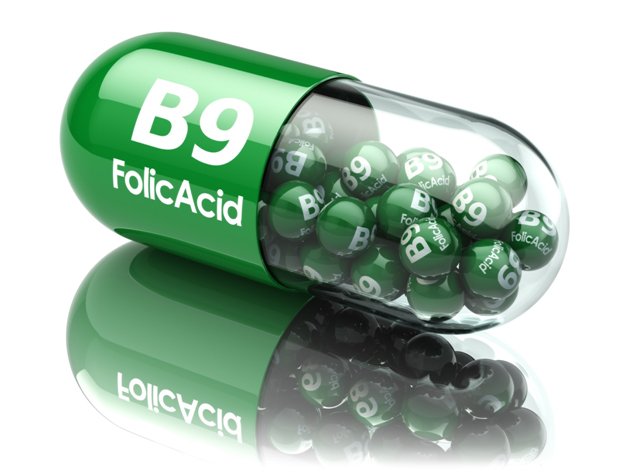Q: Is folic acid the same thing as folate?
Both folic acid and folate are the same vitamin, B-9, just slightly different forms of it.Like several other vitamins, vitamin B-9 has a synthetic version called folic acid and several other types found in foods. Although all kinds of B-9do the same job in your body, they look slightly different, and some are better absorbed than others.
Vitamin B-9 was first discovered and isolated from the leaves of green leafy vegetables. Researchers named it folium, from the Latin word for leaf, folia. The scientists identified four closely related naturally occurring compounds that work as vitamin B-9 in our bodies, called folates.
While folates are the naturally occurring vitamin B-9 compounds, folic acid is their synthetic cousin. Folic acid is more easily manufactured and absorbed into the body than folates and is widely used in vitamin supplements and fortified foods.
Folates and folic acid (FA) have an essential role in supporting new cell growth, particularly for a baby’s developing nervous system. Around the third week of pregnancy, the brain and spinal cord start developing from specialized cells called neural tube cells.
A lack of folate or folic acid at this critical point can prevent the healthy development of these neural tube cells into a whole brain and spinal cord, resulting in severe and preventable birth defects called spina bifida and anencephaly.
In spina bifida, the spinal cord remains unfinished and exposed to the air from gaps in the bones of your back. Anencephaly occurs when significant parts of the brain and the skull fail to develop, causing death within hours or days of birth.
Providing adequate folic acid or folate levels in very early pregnancy reduces these severe birth defects. Because the critical time of formation of the brain and spinal cord occurs well before a woman would even suspect she is pregnant, it’s best to get supplemental folic acid BEFORE a pregnancy is confirmed.
With nearly half of all pregnancies in the United States considered “unplanned,” the Food and Drug Administration (FDA) along with the Centers for Disease Control and Prevention (CDC) recommends all women of childbearing age take 400mcg of folic acid supplementation daily.
In 1996, the FDA required that folic acid be added to all enriched flours, bread, some cereals, pasta, and rice along with other B vitamins like thiamine, riboflavin, and niacin.
Although this resulted in a significant decrease in neural tube defects, there was very little change in Hispanic women, so in 2016 the FDA approved the voluntary addition of folic acid to masa flour used to make tortillas, tacos, tortilla chips, and tamales.
One of the most common assumptions is that because vitamins are natural if there is a benefit with a standard dose, a more massive dose will give even more benefit. Not so with folic acid. Taking too much folic acid can cover up vitally important clues to diagnose and treat a painful type of anemia caused by a vitamin B12 deficiency.
A significant deficiency in vitamin B-12 intake can cause pernicious anemia, causing mental confusion and leading to irreversible nerve damage. Taking large amounts of folic acid masks essential clues to diagnose pernicious anemia. This confuses doctors and delays an accurate diagnosis, while the patient suffers additional mental deterioration and permanent nerve damage. To avoid this, the FDA has recommended the maximum intake of daily supplemental folic acid be 1000 mcg.
The labeling of some vitamins is changing. The FDA now requires products containing vitamin B-9 to label their content with dietary folate equivalents (DFEs) instead of folic acid (FA) by January 2021. The equivalent recommended daily dose of 400mcg FA for women is 600mcg using the newer DFE units.
4 Final Facts About Folate and Folic Acid:
- For best absorption of folic acid, take it on an empty stomach.
Food can decrease absorption of folic acid supplements by 20%.
- All women of childbearing age should get at least 400mcg FA (600mcg DFE) daily.
Some women may need more; talk to your doctor about what is best for you.
- The upper limit of safe intake of folic acid and folate is 1,000 mcg/day.
Folic acid tablets sold without a prescription must contain less than 1,000mcg folic acid.
- Green, leafy vegetables are an excellent source of folates.
Other good sources of folates are bananas, melons, lemons, tomato juice, orange juice, beans, and mushrooms.


